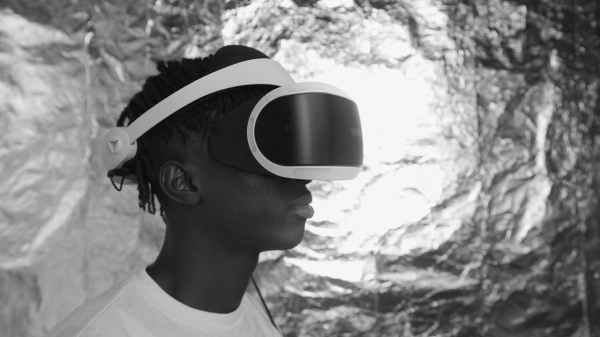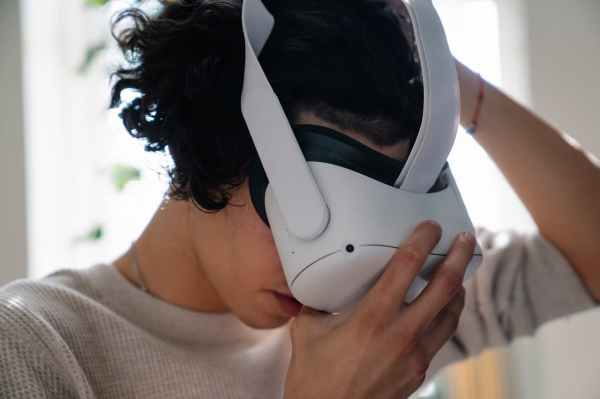What is virtual reality?
Virtual reality (VR) is an immersive technology, capable of deceiving people’s senses by creating fully simulated environments that may or may not appear real. In this way, it offers the illusion of experiencing real sounds and images, generated by a computer through a fictitious space.
In order for the user to enjoy these environments and have the sensation of physically being in these spaces, the use of special headphones and glasses will be necessary. Although they are independent elements, most accessories are connected to a computer or console. In general, this technology is often used to enhance the user experience in virtual games or entertainment. Recently, virtual projects have also been developed for commercial purposes, e.g. applications for real estate agencies, as well as the promotion of pedagogical content in educational and museum environments.
What is augmented reality?
Augmented Reality, AR, also known as Augmented Reality, AR, can be defined as a tool capable of offering interactive experiences to users by combining a physical space or element with a virtual one, thanks to digitalisation. This technology is capable of changing the real world through different digital details, superimposing different environments.
Digital development makes it possible to merge the real world with graphical content, i.e. virtual objects are shown in physical environments with the implementation of technological resources, such as smartphones. A clear example is the game Pokemon GO, in which millions of users around the world have participated in the game and have obtained digital rewards thanks to the union of AR with real environments.
What are the applications of virtual reality?
Virtual reality emerged in the video games and entertainment sector, but it has managed to gain a presence in multiple sectors thanks to the multiple application possibilities it has. One of them is health and medical training, as it has great potential in surgical operations, oncological treatments, psychological therapies, diagnoses and preventive assessments, etc.
Its use is also becoming widespread in military training, since this technology can improve the skills and capabilities of armies without harming the environment or even themselves. This virtual environment is also used for flight simulation in the air force and in pilot schools.
Another major application of VR is in classrooms or educational institutions. It is already being used in universities for practical purposes, for example, to design models of architecture or parts of the human body in medicine. It also has a strong motivational component and can be very attractive for schools and children’s centres.
There are already a large number of applications for taking virtual tours of the world and bringing history closer to travellers. VR does not seek to replace real tourism, but rather to enhance its possibilities and improve the experience, making it a great ally for museums.
What about augmented reality?
The application of augmented reality is broad, ranging from education to healthcare. First of all, it is important to highlight its current presence in innovative educational projects that support a large part of the education of children and adolescents. Its use is interesting, for example, to interact with the parts of the body or to learn about the solar system.
On the other hand, it is a great opportunity for growth and competitive differentiation for tourism companies. Thanks to the development of this technology, new types of experiences related to city tours can be offered. In fact, it is often used for the reconstruction of spaces in historic cities.
AR offers a great opportunity to increase and save costs in the logistics sector. For example, some companies have incorporated AR to show workers the shortest routes within the warehouse.
In addition, it is a very supportive tool in the interior design and architecture sector. AR applications help professionals visualise the end result during the creative process and even share it with potential clients.
Virtual reality vs augmented reality: differences
The application of augmented reality and virtual reality leverages the innovation they offer to enhance the user experience and enrich the user, especially in sectors such as medicine, education and tourism. However, they also have significant differences.
Augmented reality enhances the user experience by adding virtual elements to a real physical environment. In contrast, virtual reality creates a new simulated environment, originally developed by a computer, with such a level of sophistication that the user can operate in that virtual space, using the appropriate devices.
Generally, to access VR, the user needs to be equipped with a controller placed on the head or hands. This equipment is connected to a browser that allows the user to perform actions in the simulated environment. In contrast, to use AR it is only necessary to install an application on electronic devices, such as mobile phones, computers and tablets.








